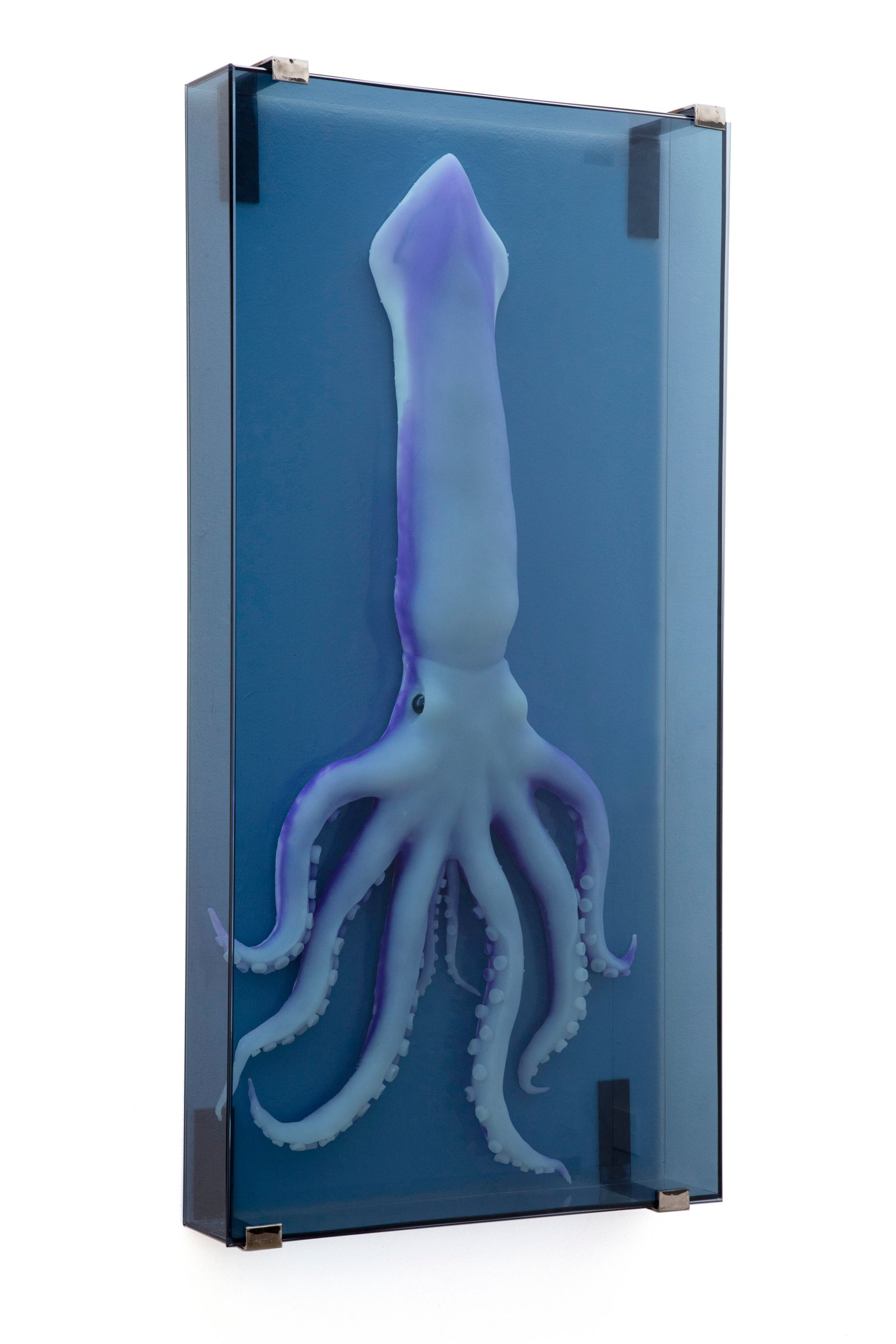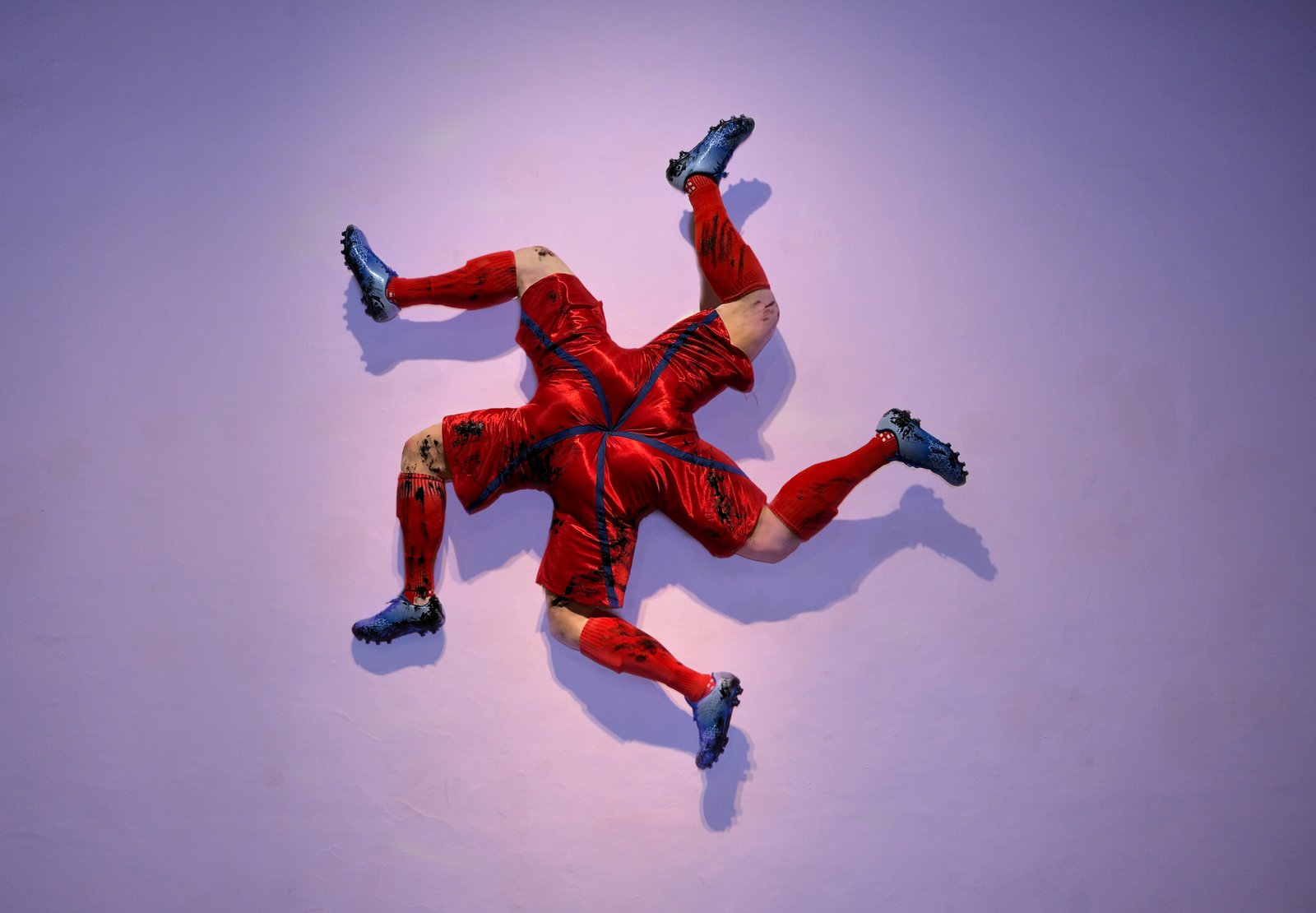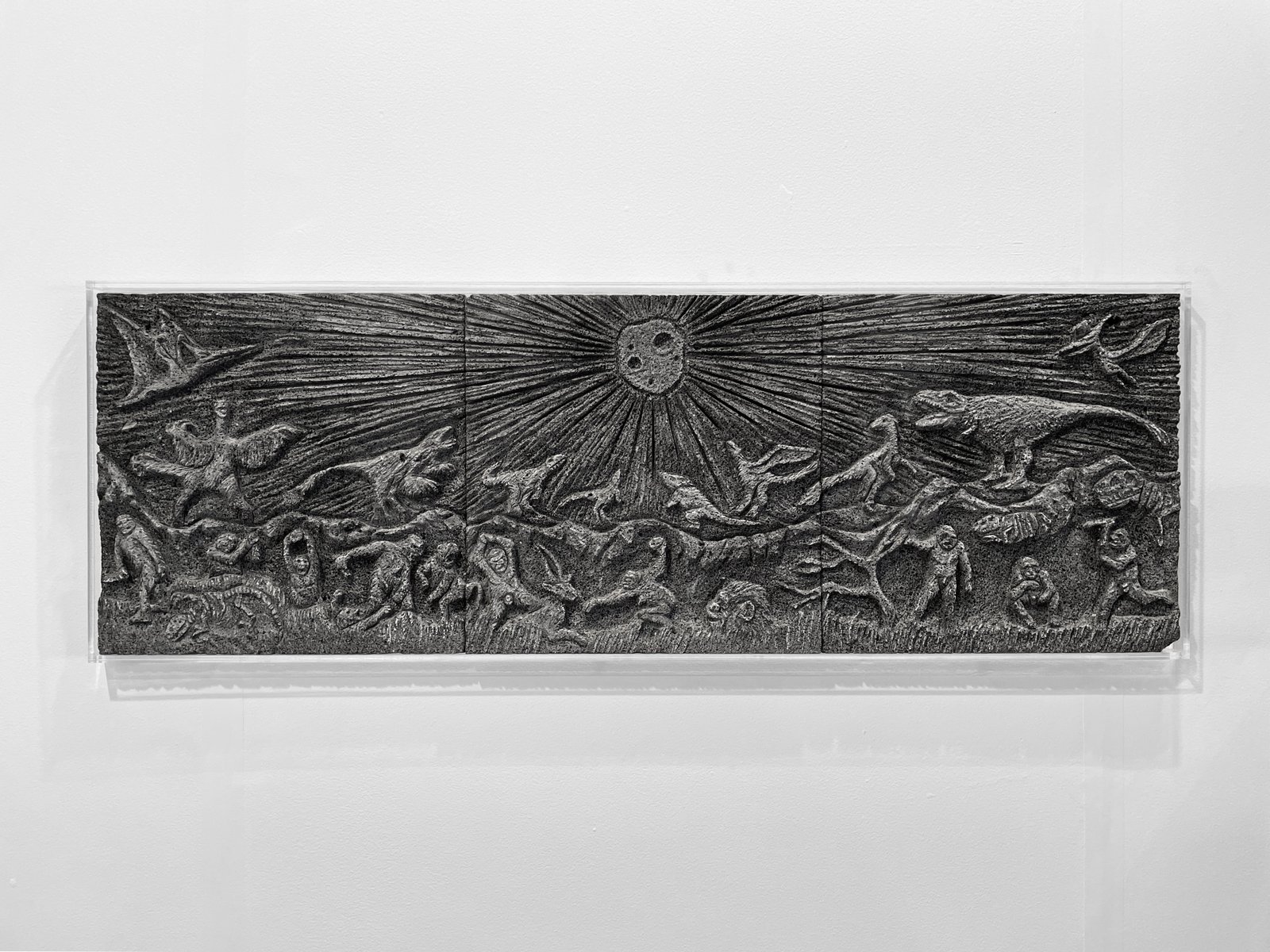Romeo Gómez López: critique of a conservatory nature
Working across media, artist Romeo Gómez López approaches culture with erotic vision and unexpected parallels
To visit Romeo Gómez López’s studio or attend an exhibition feels akin to the multiplicitous experience of discovering objects in a natural history or wax museum—of the often uncanny combination of joy, wonder, anxiety, and even disgust. Like these anthropological spaces, Gómez López’s body of work presents his take on icons of animal and human history from squids and dinosaurs to pop stars such as Justin Bieber, sports stars such as Cristiano Ronaldo, and politicians such as Vladimir Putin and Donald Trump. Though his work diverges from the categorical nature of these collections, instead taking a distinctly queer angle to deconstruct his subjects in what he explains as an attempt to “critique the conservative nature of contemporary art… and challenge notions of compulsory cisheterosexuality.” Working across sculpture, installation, diorama, and performance, Gómez López approaches culture with an erotic vision, exposing underlying libidinal threads and unexpected parallels between the fields of science, history, and contemporary culture.

Consider works from “Zac’s Haunted House: a little house of horrors for men”, Romeo Gómez López’ exhibition at Museo de la Ciudad de Querétaro. In the first room, visitors are greeted by Zacmorphia (2023), an installation of three paintings of actor Zac Efron preparing fora scene in the 2015 film “Neighbors 2.” Depicted at the height of his physical prowess, his incredibly toned abs and visible bulge are highlighted by his only piece of clothing, a bright orange pair of booty shorts. Gómez López argues that while the actor was a beacon of beauty standards of the early aughts, his ultra-ripped aesthetic and square jaw is more outdated in our current Instagram era that favors narrower faces better-suited to the angular focus of phone cameras. To track this shifting preference, the artist morphs Efron so that as you walk further into the installation, each painting slightly stretches out the actor’s proportions, making him thinner and more “Instagrammable.”
In the words of curator Olga Rodríguez Montemayor, the exhibition explores the “terrors of masculinity,” and in the case of Efron, the psychotic and physical effects of dysmorphia in the striving for perfection. If there is anything to be assumed about the perils of masculinity in the case of Efron, works such as Phantopharma (2023) are more explicit. Inside a glass case are manipulated boxes of finasteride that distort the size and text, mirroring the adverse side effect of penis shrinkage from the hair-loss medication. Hyaluronic acid, also depicted, can, on the other hand, be used as a treatment for penis and scrotum enlargement. Both products are distributed by the brand “Man Matters”, whose website and blog offer a space to talk about “men’s fears” and whose products address “everything a man cares about–performance, size, hair, and body.”

Like many of Romeo Gómez López’s works, this too, is allusive of several theoeretical and art historical references, such as gender and political theorist Paul B. Preciado’s writings on the “pharmacopornographic” in which the pharmaceutical industry, pornography industry, and late capitalism are intertwined into a contemporary system of social control through reproduction or lack thereof. It also alludes to the “haunted house” installation of Robert Gober and Louise Bourgeois’ works at the Fondazione Prada in Milan, whose name partly inspired the exhibition title. Gómez López’s replicated forms of readymades are suggestive of Gober’s Untitled (1993–1994), an oversized Farina box, and continues Gober’s art historical examination into sexuality, politics, and even religion.
Living and working in Mexico City, Romeo Gómez López’s perspective on religion and politics is shaped by what he views as a form of “Catholic conservatism that has little self-awareness” that influences the country’s political identity [See Stefano Pirovano, “Concerning Berenice Olmedo’s brutal idealism”, CFArts, 2018, Ed.] In Astropapi (2022), a sculptural installation and puppet show, Gómez López imagines a futuristic version of Mexico that occupies an extraterrestrial territory as its location on Earth was destroyed by resource extraction and other side effects of extreme macho culture. Still guided by the Virgin of Guadalupe, this new “United States of Guadalupe” was founded after the Seventh transformation of national life, a reference to Mexican President Andrés Manuel López Obrador’s 2018 campaign promise of a fourth transformation following the first three, the Mexican War of Independence, the Reform War, and the Mexican Revolution, which each transformed political and social life.
Curator Pablo Arredondo Vera asks, “after seven transformations, what remains of Mexico? What is the machismo of woke men? What does penetrative sex between men mean? How will male bodies continue to be exploited by the extractive industries of the future?” Gómez López teases these questions through his camp production of a projected Mexican future, in which fully-suited puppet astronauts, though with clear peepholes exposing erect penises, perform a two-act play with elements of bunraku theatre and post-porn actions.
Having grown up and studied art at Escuela Nacional de Pintura Escultura y Grabado or “La Esmeralda” in Mexico City, Romeo Gómez López’s practice is also informed by Mexican art history and responds to the ways in which macho culture permeates into the art world. When visiting his studio this summer, he spoke about the material machismo of straight male artists’ use of stone. In the project Heteropiedra (2020), commissioned by the Museo Tamayo for the group exhibition “Otrxs Mundxs,” he created a diorama with hyper-realistic wax sculptures of the cast of the movie Mean Girls (2004) who discussed the material while looking at a miniature replica of the stone which serves as the base for the diorama itself. Amongst varying levels of poeticism and the more traditional pondering a group would have in a gallery space, such as suggestions that the stone serves as a “political attempt to mirror the world,” offered by Cady, Karen shares that she thinks the stone “mirrors the artist’s wet dreams and his HARD ROCK COCK!”

In a later series of works, Romeo Gómez López continues to tease the sexual and theoretical conceptions of the stone together, suggesting that the meteorite that crashed into earth, creating a giant hole, killing the dinosaurs and transforming the planet, was the predecessor to today’s “hetereopiedra” or “hetero stone.” In a series of works and exhibitions about the “hetereopiedra”, he elaborates that “the cataclysmic collision wiped out the dinosaurs, and the contemporary fantasy and adventure film industries have despoiled the species”. He observes how “patriarchal narratives and predominantly male-dominated blockbuster productions have omitted the fact that many dinosaurs possessed feathers, to make them seem more fearsome and monstrous, clouding the perception of the mass public”.
Acting as an artist-as-anthropologist, Romeo Gómez López created Go-Go Raptor (2022), adorning a mechatronic puppet of the prehistoric creature with bright red feathers. In reference to Felix Gonzalez-Torres’ Go-Go Dancing Platform (1991), created in the context of the HIV AIDS crisis during the 1980s and 1990s where gay men, regardless of HIV status, faced widespread discrimination, in which a lone dancer would sporadically dance on the platform, Gómez López’s raptor dances around the stone. Gómez López further embeds discussions of sex, loss, and intimacy and icons of contemporary art history and pop culture into this series in works such as Homenaje a David W (2022), about the artist and activist David Wojnarowicz, who died of HIV/AIDS in the 1990s. One Hole for Everything (Un hoyo pa’ todo) (2023), a masterfully rendered drawing that shows two dinosaurs having sex in the forest, is suggestive of contemporary cruising spots and reintroduces the importance of pleasure back into discussions around sex. [See Agata Pyzik, “Jaanus Samma, the many gay histories of Modern Eastern Europe”, CFArts, 2020, Ed.]

As much as Romeo Gómez López is critical of heterosexual society, he also takes his jabs at the gay community and what he sees as the “toxic contributions of white gays to the LGBT+ community.” In the hyper-realistic sculpture Pieano (2021), he creates a fetish-Frankenstein sex toy out of a mould of his boyfriend’s anus and foot. He elaborates that by “alluding to foot fetish, the Pieano, hopes to stick the foot to the heteronorma within the phallocentric gay-whitexican community obsessed with big penises, to curb macho thoughts that are adopted from the straight lifestyle, but do not translate well to a diverse community with different needs, this masturbator sleeve can be penetrated and fucked, or fingered and fucked to satisfy tops and bottoms alike.”

In Whirlpool (Espantucks), 2023, from his exhibition in Querétaro, the hole has been filled; still, instead of a dick or another sex toy, it is with the hand lazily holding an iced cold brew that continuously spins the cup around and round. For Gómez López, the longer the man “spends inside the whirlpool, the deeper he sinks,” another humoristic pop work that critiques the privileges of certain white gays. Throughout his work, this comedic flair and quick wit allow him to seamlessly traverse topics and periods, all while presenting visually alluring and slick works.
January 11, 2024
